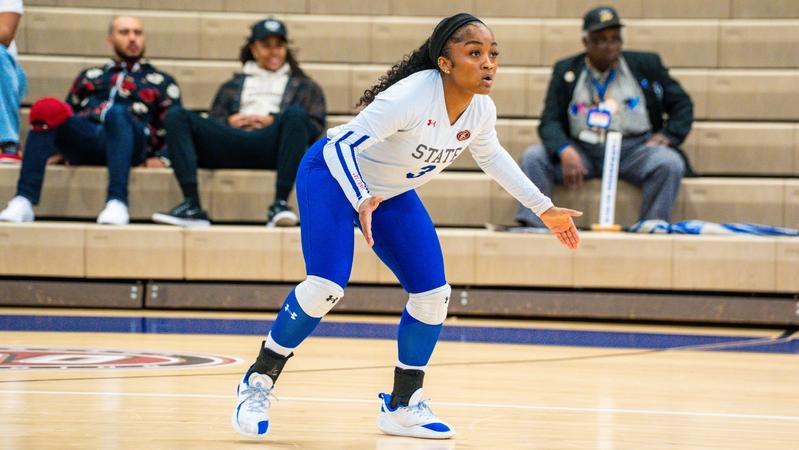NIL
How the new House settlement will impact Tennessee athletics with more NIL changes

College athletics continues to change in the NIL era. On Friday evening, Judge Claudia Wilken approved the House v. NCAA settlement. This decision will lead to revenue sharing and roster limits throughout college athletics.
College athletics will now have a salary cap of around $20 million. Football programs could have anywhere between $13 and $16 million to spend on their teams for the 2025 season.
“Despite some compromises, the settlement agreement nevertheless will result in extraordinary relief for members of the settlement classes,” Judge Wilken shared. “If approved, it would permit levels and types of student-athlete compensation that have never been permitted in the history of college sports while also very generously compensating Division I student-athletes who suffered past harms.”
The settlement will also create a new NIL clearinghouse for third-party NIL deals of $600 or more. The new clearinghouse, “NIL Go,” must approve all contracts meeting that restriction.
If the NIL deal is not approved, the school could be fined, or the athlete could be ineligible for the upcoming season, creating massive implications for NIL contracts.
It was reported that 70% of past NIL deals would have been denied under the new settlement and NIL guidelines, but 90% of deals with public companies would have been approved.
Under the new settlement, roster limits will also be phased into college athletics. The proposed roster changes include 105 for football, 15 for men’s and women’s basketball, 34 for baseball, 28 for men’s and women’s soccer, 25 for softball, and 18 for volleyball.
Paul Finebaum did not hold back from calling out the NCAA and its inability to govern college athletics, belittling the organization to just “tournament directors,” and he’s not wrong.
“We’re still having tournaments, such as the Women’s World Series and the Men’s Baseball Tournament, but the NCAA, as we know it, is gone,” Finebaum said on Sportscenter. “They literally have no jurisdiction whatsoever other than to be tournament directors.”
The NCAA has lost virtually all control over member schools, allowing them to do almost anything they want. The NIL era is often referred to as the “Wild West,” and that is because the NCAA’s controlling power is diminishing more and more every day.
How could the settlement affect Tennessee athletics?
The settlement and future outcomes could impact Tennessee athletics’ approach moving forward, including the possibility of being kicked out of the SEC if they comply with state law, which contradicts the NCAA.
Membership contracts are currently being introduced throughout Power Four conferences, challenging Tennessee’s new state law stating that state institutions and their NIL collectives can continue to pay above the proposed salary cap.
It also states that schools cannot sue the College Sports Commission, which will be the group enforcing the new rules under the House settlement.
If Tennessee, or any other Power Four school, chooses not to sign the agreement, it could be kicked out of its conference and blackballed from joining other conferences.
Tennessee Athletic Director Danny White seemed to be optimistic about the House settlement and its effectiveness in college athletics moving forward, but believes collective bargaining is the key to leveling the playing field across all sports.
“There’s been a lot of speculation around collective bargaining,” White shared. “Every sports organization in our country has collective bargaining for a reason. It’s very complicated. These are students. We don’t have just one sport. We have twenty and only two of which are profitable. It’s a really complicated situation that we have been deep in for 3-4 years. I think everyone is search for answers.
“There’s a lot to transpire to see how that plays out. But as you and I have discussed, I think collective bargaining is maybe where we land down the road. But in a competitive space like this, everyone’s trying to win.”
The House settlement decision isn’t the only major decision courts have to make regarding college athletics. There are also decisions waiting to be made regarding athletes’ eligibility, with the possibility of changing the original four years of eligibility to five years of eligibility.
That could drastically change what college athletics looks like moving forward and could even help Tennessee, as Jordan Gainey and Zakai Zeigler have both expressed interest in returning to play one more season for Rick Barnes if it is passed.
Tennessee could benefit from multiple sports from the results of the house settlement and potentially add a fifth year of eligibility for college athletes.
The Vols want to continue being championship contenders across various sports, and the revenue sharing and NIL caps could help Tennessee compete with the blue bloods of college athletics moving forward.
NIL
Texas Longhorns Fans HATE NIL All Of A Sudden

Ain’t no fun when the rabbit’s got the gun.
Mark the date down on your calendars, ladies and gentlemen: January 8, 2026. Also known as the day Hell froze over.
No, it has nothing to do with the Rapture or dogs and cats living together. It’s actually something far more unlikely.
It seems that Texas Longhorns fans (yes, THOSE Texas Longhorns) are not down with the NIL “pay for play” era of college football.
READ: Washington, Demond Williams Saga Set To Get Ugly
And honestly, in a vacuum, I would say I can’t blame them.
I haven’t exactly minced words when it comes to how I feel about the modern era of my favorite sport, but the fact that Texas fans are now NIL haters is laughable.
Oh, man! It ain’t no fun when the rabbit’s got the gun now, is it?
Of all the schools in this great country and this great sport, Texas being the one to cry poor and want a change to the rules is hysterical.
This is the same program that started the season number one in the AP Poll and had one of the most expensive rosters in the country… and bragged about it, too.
This is the same team that just a few years ago was flexing its armada of Lamborghinis on recruiting trips, basically thumbing their nose at anyone who didn’t have six-figure sports cars sitting in their stadiums for high school prospects to sit in.
You can’t hide money, that’s for sure.
Oil money is a different kind of rich, as many college fans are learning thanks to Texas Tech’s recent run of dominance on the field and in the transfer portal.
Hell, even Houston is starting to make a run at some high-priced prospects in the portal.
Texas has unlimited funds, so they shouldn’t be hating the game nor the player.
As one of the Texas fans posted on X, this might be a GM or even a Sarkisian problem.
I don’t think the money at The University of Texas all of a sudden dried up. This definitely reeks of something different.
Whatever the problem is, the Longhorns better get it figured out fast, because they are getting lapped by teams in their conference and in their state.
And no amount of changes to the current landscape of college football will help with whatever they have going on in Austin.
NIL
Take a bow, college sports. You are broken in almost every way possible.

It’s easy to take shots at the leaders of college athletics for letting their industry spiral to the point of all-consuming dysfunction, but give them credit for one thing.
They have managed to come up with arguably the worst business model on earth.
Advertisement
Here’s how it works:
• Have an open bidding system for coaches and athletes, regulated by no one, that allows them to change jobs at will regardless of the length of their contracts and in fact encourages them to exert their leverage to obtain better deals every year.
• Do not pay the players for their ability to play football because that would make them employees. Rather, pay for their “marketing rights,” which avoids the employment conversation but complicates legal recourse in contractual disputes and ultimately leaves schools more vulnerable to chicanery and broken promises.
• Create a system that supposedly regulates payroll costs and ensures competitive balance by requiring a third-party clearinghouse to approve deals that don’t conform to their rules, only to then instruct said clearinghouse to ignore most of the rules they wrote because they’d probably lose a lawsuit.
Advertisement
• Ask your most successful and loyal customers, the donors, to continue shoveling money at those players for no real benefit other than the fleeting enjoyment of watching them play, not knowing if they’ll be worth watching play in the first place. Then, after those players decide to play the leverage game again, ask your richest fans to deliver an even bigger pile of money for a new set of players who will be gone in a year.
Take a bow, college sports. This is true brilliance at work.
While the College Football Playoff and March Madness always provide compelling theater, including a highly anticipated set of semifinals Thursday and Friday, the inner workings of college sports have never looked more unpleasant, disorganized and utterly doomed to be an anvil of failure hanging around the neck of those in charge.
We have roughly one-third of college football players in the transfer portal.
Advertisement
We have quarterbacks commanding $4 million and $5 million deals — essentially the equivalent of an NFL rookie salary for the No. 11 overall pick — that aren’t even guaranteed stars.
We have schools who begged for rules and guardrails to bring sanity and structure to the ecosystem using marketing companies to create financial packages for players, allowing them to exceed the revenue-share cap they negotiated just last year in the House v. NCAA settlement.
We have a situation at Washington where quarterback Demond Williams signed a revenue-sharing agreement to stay at the school, then turned around and announced he wanted to go into the transfer portal because he likely got a whiff of even bigger money somewhere else (cough, LSU, cough). Stay tuned to see how that one gets sorted out!

Demond Williams Jr.’s fight with Washington is just one of many problems with the current state of affairs in college sports. (Kevin Terrell/Getty Images)
(Kevin Terrell via Getty Images)
We have a college basketball product that is wide open for players who were professional athletes playing in the NBA G League or Europe, including former NBA draft picks. Good luck to the NCAA’s attorneys when someone who has signed an NBA contract in the past inevitably wants to come back to college for a big payday and gets denied eligibility because that’s an arbitrary bridge too far.
Advertisement
We have the NCAA throwing its hands up in the air on most of this stuff, waiting for Congress to pass legislation that gives it legal protection to enforce its rules. Given that the congressional lobbying effort hasn’t borne fruit since former NCAA president Mark Emmert started it more than six years ago, good luck getting that to the finish line now that we’re in another midterm election year and there are various domestic and international crises that will likely command most of their time.
Oh, and as bad as it looks based on stuff that’s public, the environment is so much more chaotic and distrustful behind the scenes.
Here’s an example.
A power conference administrator passed along a document signed on Dec. 3 — national signing day for high school recruits — that looked like an NIL deal between Tennessee’s Volunteer Club and a recruit that had flipped to the Vols that day.
Advertisement
But the reason the contract had been floating around among outraged administrative types was that the contract offering $85,000 worth of stipends, a paid apartment in Knoxville and $25,000 to pay the agent’s fees — while requiring nothing in return — was allegedly signed by the athlete’s grandmother.
Tennessee’s competitors felt it was a blatant attempt to circumvent the revenue-sharing cap. The document was sent to the NCAA, the SEC and the College Sports Commission, which is now the responsible party for policing this stuff. Nobody knew quite what to make of it.
Sources connected to the deal told Yahoo Sports the document was written in error by an inexperienced agent who didn’t know if a minor was allowed to sign a contract in that state and terminated it later in the day. Yahoo Sports has reviewed copies of the termination letter and a more standard NIL agreement with the player dated Dec. 5.
The point here is not that anybody did anything wrong. But it does provide a look into the inner workings of a business that is so unregulated that it would allow for such a mistake to happen in the first place while at the same time being such a believable story of potential cheating that other schools were actively trying to sic the CSC enforcement staff on Tennessee.
Advertisement
And, again, it’s worth emphasizing that the entire point of the House settlement and the creation of the CSC was to put entities like the Volunteer Club out of business and prevent these kinds of deals, or at the very least, construct a solid wall between recruiting activity and money flowing through booster-funded collectives.
After millions in legal fees, the power conferences couldn’t even get that part right once the lawyers started pushing back and accusing them of colluding to restrict earnings.
So what do you have now? A system of talent procurement where some people are abiding by the rules, some are finding loopholes to do what they believe they can defend in court and others are completely ignoring the rules while daring a weakened NCAA/CSC to come get them.
And because it’s so vague who’s paying players through revenue share and who’s promising payments through third parties that may or may not entirely be within the rules, coaches and administrators at a lot of schools feel that their only choices are to use the flimsiness of the system to their advantage or be taken advantage of.
Advertisement
Nobody should want this.
But it is the product of many choices over many years made by university presidents, athletic administrators and NCAA leadership to avoid confronting the reality that they need to tear the amateurism model down to its studs and start over.
It’s now clear they would rather have this chaos than the thorny work of building a system that pays players fairly, treats them as professionals and makes everyone accountable to the contracts they sign through collective bargaining.
It’s just one more choice, and both paths are hard. There would be real challenges trying to build that system for college sports, but as we can plainly see now, there are no magic solutions as things stand.
Advertisement
Every time they try to fix a leak, six more spring up from the bottom of the boat. So each year they just accept sinking a little deeper into the abyss, hoping for a bottom that never seems within sight.
NIL
Wetzel: How NIL, transfers and rev share brought the SEC back to the pack

Before the Rose Bowl, Indiana coach Curt Cignetti was asked about preparing his players to face Alabama and its considerable “mystique.”
“Our guys just know what they see on tape,” Cignetti said.
Translation: This Alabama team just isn’t that good.
Indiana would go on to dominate the Tide 38-3. The win not only propelled the Hoosiers to the national semifinals to play Oregon but also left college football to wonder what had happened not merely to the once-mighty Crimson Tide but to the SEC as a whole.
After decades of clearly establishing itself as the nation’s best conference, both the top-end excellence and the depth of the league have fallen. The SEC’s hopes now rest with Ole Miss, which is still going through coaching shake-ups and distractions heading into its semifinal matchup with Miami.
It’s not that the SEC isn’t still “good” or even capable of winning a national championship — Ole Miss might very well do it. Top to bottom, it might still be the best league, with the majority of schools all-in on football.
That said, the days of complete domination, all-SEC national title games or deep, juggernaut teams are clearly gone, perhaps forever. This isn’t the same.
The SEC ruled the old era of college football, when rosters were built through high school recruiting that favored proximity first, followed by opulent facilities and rabid fan bases.
It was perfect for the SEC since the Southeast was rich with talent and league schools invested heavily in infrastructure while playing in front of massive crowds (some of whom might have been willing to offer some under-the-table sweeteners).
The new era of direct revenue sharing, the transfer portal and NIL possibilities, has caused talent to disperse, weakening depth as athletes seek playing time, opportunity and out-in-the-open money.
Suddenly the great teams aren’t as great, and the rest of the teams are better.
“This is the most fun I’ve ever had in coaching because you know you’re on a more equal playing field,” Illinois coach Bret Bielema told ESPN on Tuesday. “The introduction of the portal, NIL and revenue sharing, is the most game-changing development in my 32 years of coaching.”
Bielema took over at Illinois in 2021 after previous stops at Arkansas (2013-17) in the SEC and Wisconsin (2006-12) in the Big Ten. He has won 19 games during the past two seasons.
“It’s hard when you would do what you have to do as long as you possibly could and in the end, sometimes it just didn’t matter,” Bielema said of trying to recruit back in the day. “Now you just come to work every day knowing that blue blood, red blood, orange blood, whatever, everybody’s got a chance, man.”
That’s why Bielema says that while he understands why so much focus is on the SEC stepping back of late, this really applies to everyone.
He notes that he just signed the best recruiting class of his entire career, including when he led Wisconsin to three league titles. He even flipped a running back away from Alabama on signing day. “I’ve never been able to do that,” he said.
Where power programs — and the SEC had more than any other league — could once hoard talent, both improving their roster and starving others, now the gap is smaller. Almost anyone can pick off a high school recruit or two. Then the transfer portal steps in. The days of Alabama having four eventual first-round wide receivers, as it did in 2019, are over. Kirby Smart and Georgia can’t have a two-deep defense full of future NFL stars like the one during the Bulldogs’ back-to-back titles.
“The second[-string] guard at a university doesn’t want to be the No. 2 anymore,” Bielema said. “He wants to be a starter, so he’ll leave. That is unprecedented.”
During the BCS era (1998-2013), the SEC won nine of the 16 championships, including seven in a row 2006-12. In the 10 years of the four-team playoff, the SEC went 16-6, with two of those losses coming in SEC vs. SEC title games. Alabama, Georgia and LSU combined to win six championships.
The past two national champions (Michigan and Ohio State), however, hail from the Big Ten. With Oregon and Indiana matching up in one semifinal, that league is guaranteed a spot in a third consecutive title game. Penn State, meanwhile, reached the semis last season.
The SEC is just 4-9 this postseason (other bowls included) and just 2-7 against teams from other conferences. The Big Ten is 9-4. The ACC is 8-4. While bowl results carry only so much meaning these days, the starkness of the numbers is notable.
After all, the SEC has built much of its brand on being superior to all others — commissioner Greg Sankey was lobbying for seven SEC schools to appear in this year’s playoff (five got in). Postseason losses suggest perception wasn’t reality — middle-of-the-pack SEC teams such as Vanderbilt, Missouri and Tennessee all went down.
The SEC has benefited from circular reasoning (when top SEC teams win league games, it’s a sign of strength at the top; when they lose league games, it is a sign of the conference’s unmatched depth). But the most undervalued segment of the sport might have been the middle of the Big Ten and ACC, notably Big Ten teams Iowa (which defeated Vanderbilt) and Illinois (which beat Tennessee).
No one would dare suggest that the SEC is doomed. If anything, it is just doubling down, even in unlikely places.
Former also-ran Vanderbilt is fully committed to winning now, for example. Kentucky, which once saw football as a way to pass the time before basketball, just spent $37 million to fire its coach and is investing heavily in the portal, including flipping Notre Dame quarterback Kenny Minchey from Nebraska.
The SEC remains the most popular league and the most watched on television. The passion is there. The investment is there.
It’s just that the new rules provide more opportunity at more places. Competition is fiercer, inside the league and out, which means the days of domination are likely over.
“Anybody can beat anybody these days,” Bielema said.
Even the SEC.
NIL
McGuire one of eight finalists for Bear Bryant Award
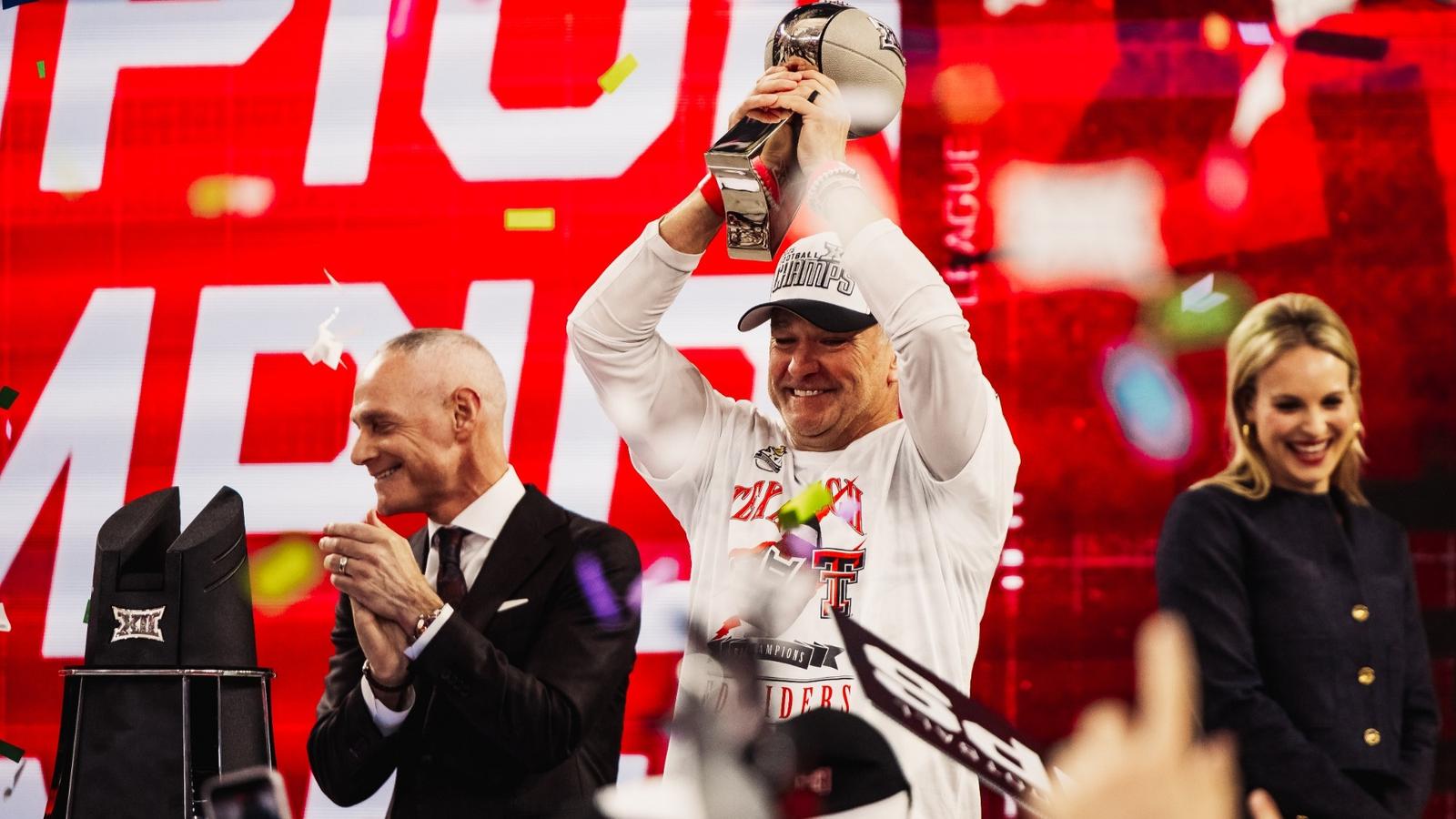
LUBBOCK, Texas – Texas Tech head coach Joey McGuire was named one of eight finalists Wednesday for the Paul “Bear” Bryant Coach of the Year Award after leading the Red Raiders to their first Big 12 Conference title and an appearance in the College Football Playoff.
The award, now in its 40th year, is given annually to the college football coach for contributions that make the sport better for athletes and fans alike by demonstrating grit, integrity and a winning approach to coaching and life – both on and off the field. McGuire was joined as a finalist by Indiana’s Curt Cignetti, James Madison’s Bob Chesney, Miami’s Mario Cristobal, Texas A&M’s Mike Elko, Virginia’s Tony Elliott, Oregon’s Dan Lanning and Vanderbilt’s Clark Lea.
The Bear Bryant Award is the only college football coaching honor given after the National Champion has been determined. It will be presented Jan. 21 during an awards ceremony hosted at the Post Oak Hotel in Houston. The event will be broadcast by CBS Sports Network on a tape-delayed basis beginning at 12:30 a.m. on Jan. 22.
In addition to being named a finalist for the Bear Bryant National Coach of the Year Award, McGuire was also named Wednesday the Big 12 Conference Coach of the Year by the organization. The finalists and Coach of the Year recipient are voted on by members of the National Sports Media Association, the Bryant Awards’ executive leadership team and the Bryant family.
This is the fourth national coaching award to name McGuire as a finalist this season as he was previously one of the final candidates for the George Munger College Coach of the Year Award, the Eddie Robinson Award and the Dodd Trophy. It is the first time in his career McGuire has been a finalist for any of the national coaching awards.
The Red Raiders reached new heights this past season under McGuire, who pushed Texas Tech to a school-record 12 wins and its first Big 12 title. McGuire led the Red Raiders to their first College Football Playoff appearance at the Capital One Orange Bowl after downing BYU, 34-7, in the Edward Jones Big 12 Championship, securing Texas Tech’s first outright conference crown since 1955.
Texas Tech proved to be one of the most-dominant teams in recent history on its way to a 12-2 record, with all 12 wins coming by at least 20 points. The Red Raiders are joined by Alabama in 2018 as the only teams in the Associated Press era (since 1936) to record 12 or more wins by 20-plus points prior to a bowl game. Texas Tech is just the fifth FBS team with 12 wins by 20-plus points in a season period during that span.
Despite a loss to No. 5 Oregon in the Orange Bowl, Texas Tech will likely end its season ranked in the top 10 of both the Associated Press and USA Today Coaches’ polls for the first time in history behind one of the most-balanced rosters in college football. Texas Tech currently ranks in the top-11 of several statistical categories, namely rushing defense (1st), scoring defense (3rd), total defense (4th), scoring offense (7th) and total offense (11th).
The Red Raiders have been the winningest Big 12 program under McGuire as Texas Tech has won 25 conference games in his four seasons, the most for any league school during that span. The Red Raiders are 35-18 overall under McGuire, which is the most wins by a Texas Tech head coach through 53 games since Jim Carlen was 35-17-1 midway through his final season of his five-year tenure from 1970-74.
NIL
NIL a factor in Arch Manning losing Texas roommate, WR Parker Livingstone to rival Oklahoma in transfer portal

Former Texas wide receiver Parker Livingstone crossed a Red River Rivalry line this week, committing to Oklahoma via the 2026 college football transfer portal. Livingstone, who roomed with quarterback Arch Manning and became one of his favorite targets during the 2025 season, ranked No. 3 on the Longhorns with 516 receiving yards and No. 2 with six touchdown receptions.
247Sports college football and transfer portal analysts Chris Hummer and Cooper Petagna provided insights into the breakup between Manning and Livingstone, detailing how NIL money and agent involvement played a significant role in the decision.
“It’s a surprising situation,” Hummer said Wednesday on CBSSports HQ.
NIL
Mark Cuban makes donation to Indiana for 2026 transfer portal cycle, claims Hoosiers are ‘happier this year’
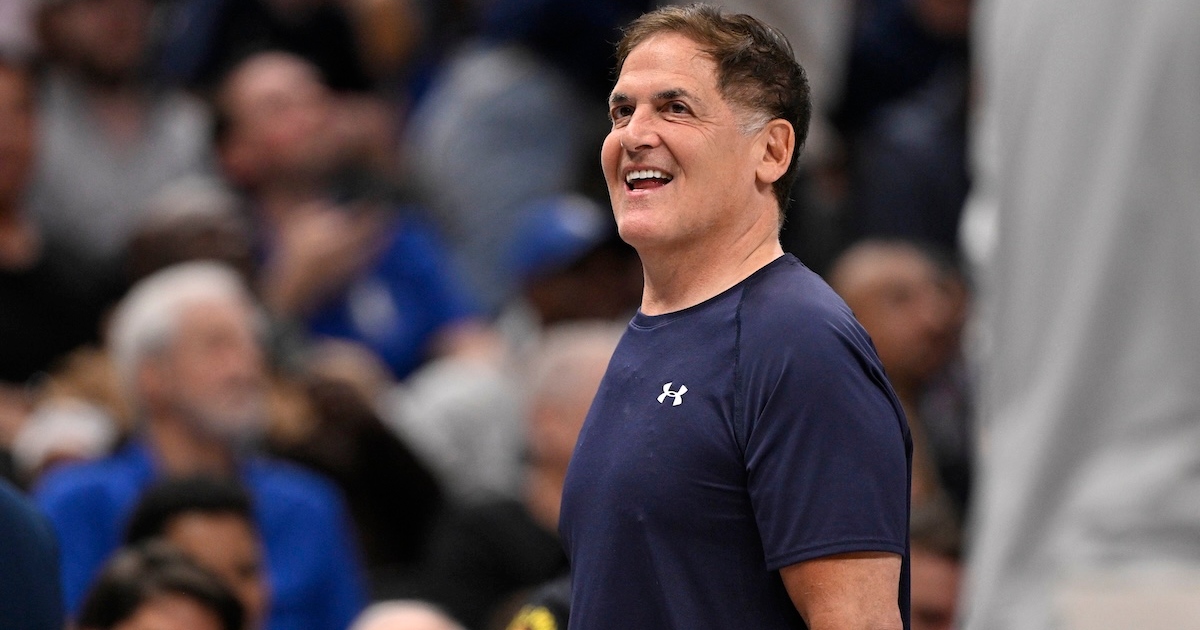
Mark Cuban reportedly made a donation to Indiana football for the 2026 transfer portal cycle, according to Alex Schiffer of Front Office Sports. The billionaire most known for his time as the majority owner of the Dallas Mavericks is a 1981 graduate of the school.
“Already committed for this portal,” Cuban wrote to FOS in an email. “Let’s just say they are happier this year than last year.”
SUBSCRIBE to the On3 NIL and Sports Business Newsletter
Indiana already made splashes in the transfer portal, such as TCU QB Josh Hoover committing for the 2026 season. They also landed Michigan State WR Nick Marsh and Boston College RB Turbo Richard. That’s only the tip of the iceberg and Indiana is still playing in the College Football Playoff!
Cuban reportedly gave a “big number” to the Indiana athletic department in the past, as he told CBS Sports in October. He cited his connection with head coach Curt Cignetti as the biggest factor.
Cuban is also no stranger to donating to his alma mater. In 2015, he gave the school around $5 million for a sports media center and gave $6 million to fund Indiana’s rugby club.
But first thing’s first, Cuban will be watching Indiana play Oregon in the Peach Bowl in the CFP semifinals. It’s all about what’s in front of them and nothing’s changed for Cignetti and IU.
“Yeah, excited to be a part of the Peach Bowl,” Cignetti said. “Playing a great opponent in Oregon, Coach Lanning. Like I said so before we played earlier in the year, one of the young superstars you know in the coaching profession. I think they’re 26-2 the last two years.
“And, you know, really an excellent football team, offense, defense, and special teams. Do a great job of coaching. Be a big challenge. We were fortunate, you know, to win the game out in Eugene. It’s hard to beat a great team twice. You know, very difficult. So, edge to Oregon there. But tough to be a great team twice. Looking forward to the challenge.”
Indiana and Oregon are set to square off Friday night in the Peach Bowl. Kickoff is set for 7:30 p.m. ET and the winner will play for the College Football Playoff National Championship.
-
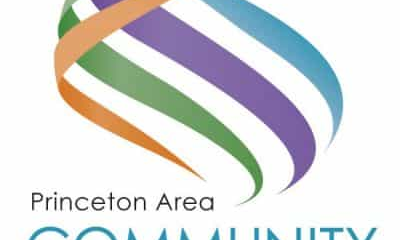
 Rec Sports3 weeks ago
Rec Sports3 weeks agoPrinceton Area Community Foundation awards more than $1.3 million to 40 local nonprofits ⋆ Princeton, NJ local news %
-

 Sports2 weeks ago
Sports2 weeks agoBadgers news: Wisconsin lands 2nd commitment from transfer portal
-

 Rec Sports6 days ago
Rec Sports6 days agoFive Youth Sports Trends We’re Watching in 2026
-

 Sports3 weeks ago
Sports3 weeks agoIs women’s volleyball the SEC’s next big sport? How Kentucky, Texas A&M broke through
-

 Rec Sports3 weeks ago
Rec Sports3 weeks agoNBA, Global Basketball Community Unite for World Basketball Day Celebration
-
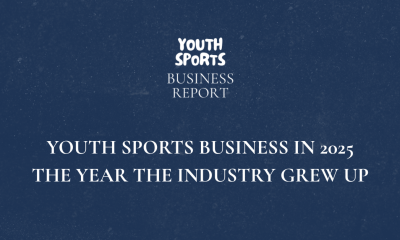
 Rec Sports3 weeks ago
Rec Sports3 weeks agoYouth Sports Business in 2025: The Year the Industry Grew Up
-
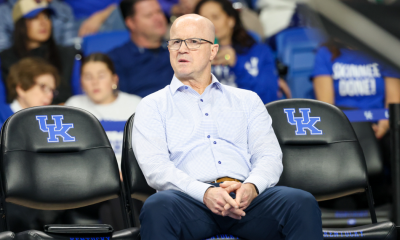
 Sports2 weeks ago
Sports2 weeks agoKentucky VB adds an All-American honorable mention, loses Brooke Bultema to portal
-
Rec Sports3 weeks ago
Inside the NWSL’s first combine: Can the league create a more robust pathway for American talent development?
-

 Motorsports3 weeks ago
Motorsports3 weeks agoNASCAR, IndyCar, and F1 Share These Race Days in 2026
-
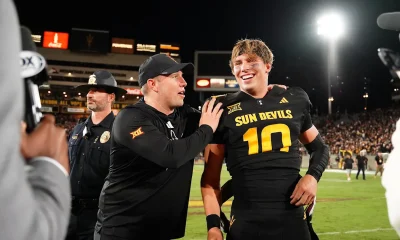
 NIL3 weeks ago
NIL3 weeks ago$2.1 million transfer portal QB predicted to join College Football Playoff team


































